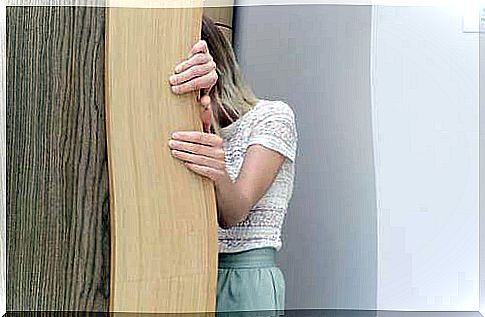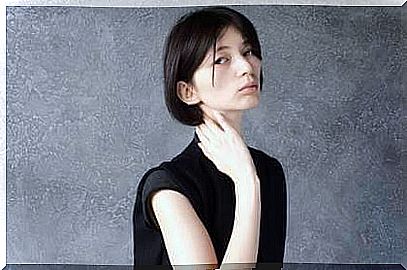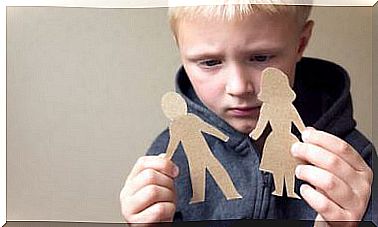Taijin Kyofusho’s Confusion, Fear Of Offending Others

Taijin Kyofusho disorder gives shape to a very specific type of phobia. A person who suffers from this disorder is particularly afraid of offending others through words (an inappropriate comment, for example) or through gestures. This disorder corresponds to a type of social anxiety described in diagnostic manuals.
In general terms, it is very likely that this disorder is associated with Japanese culture. As we all know, if there is one thing that the Japanese stand out for is the importance they place on behavioral education, absolute respect and careful politeness to the millimeter in their daily lives. But this disorder can affect anyone, regardless of culture.
Behind Taijin Kyofusho’s turmoil lies a strong feeling of insecurity. It is this feeling that fosters the obsessive and delusional desire for perfection in the person with this disorder whenever they expose themselves publicly. These people desire so much to have a perfect physique and demeanor that they doubt everything they say and do.
The fear of blushing, of hesitating, of saying something not very intelligent and even the fear of smelling bad… These fears are just a few examples of the obsessions that plague people with Taijin Kyofusho disorder.
This disorder was first described in Japan. On the other hand, in the West, the type of phobia which is characterized by the fear of offending others does not have a category of its own. This disorder is part of social phobias.
Characteristics of Taijin Kyofusho Disorder

Taijin Kyofusho disorder translates as “fear disorder of interpersonal relationships”. This type of social phobia was first described in Japan, and it is no accident: Japanese culture emphasizes the importance of the group to the individual, hence the fact that the The characteristic attitude of this disorder was quickly described and labeled.
As we told you above, this type of phobia is not unique to the Japanese. Nevertheless, for them, it is a very well-known psychiatric syndrome whereas in the West we hardly hear about it. This disorder is still included in the “Manual of diagnostics and statistics of mental disorders (DSM-5) but not in its own category: it is simply part of“ other specified obsessive-compulsive disorders ”.
The differences between Taijin Kyofusho disorder and social phobia
Although we often hear that Taijin Kyofusho Disorder is roughly a type of social phobia, there are a few nuances that should be highlighted that make it unique.
- People who suffer from social phobia are anxious and feel ashamed when they are in front of other people. People who suffer from Taijin Kyofusho Disorder fear being ashamed or disturbing others just by their presence.
- The basic problem is not the person’s reaction to a specific situation. Fear relates to the reaction of others when the person with the disorder is exposed.
- Another striking aspect of the disorder is the onset of obsessive-compulsive behaviors. In the scientific literature, we have the example of an American woman who has been diagnosed with this disorder. A study published by the Chicago University of Health Sciences describes the patient’s particular obsession with looking at people’s genitals. Patients with this disorder are anxious to have these obsessive-compulsive behaviors but they cannot control them.
All these nuances show us the complexity of this disorder.
Taijin Kyofusho subtypes and other aspects
The Japanese diagnostic system shows that this disorder gives shape to four very common subtypes, which highlight a specific phobia.
- Sekimen-kyofu : fear of blushing and that the other person will feel uncomfortable because of it.
- Shubo-kyofu : fear of disturbing others because of their unattractive physique.
- Jiko-shisen-kyofu : the fear that others will feel threatened when looking at them.
- Jiko-shu-kyofu : the fear of smelling bad.
In the West, other aspects are also taken into account.
- Analyze whether the characteristics are stable or transient. We know, for example, that these behaviors can appear in adolescence, then disappear over time.
- The degree of the phobia.
- The appearance of delusional thoughts, obsessive-compulsive thoughts. ..
- Schizophrenia. It is common for this disorder to appear in patients with schizophrenia.
The treatment

It should be pointed out that, from a cultural point of view, Taijin Kyofusho disorder is very interesting.
We know that the first treatments appeared in 1910 with Doctor Shoma Morita. Its therapeutic perspective is as follows:
- isolation of the patient in specific facilities
- invitation to rest and relaxation
- keeping a journal
- manual activities such as gardening
- courses given by doctor Shoma Morita himself
From the 1930s, this specialist changed certain aspects of his treatment. He introduced group therapy as well as the administration of certain drugs. At present, Morita therapy is still used in Japan.
In the West, the strategy varies quite a bit since this disorder is simply considered a social phobia. It is therefore treated the same way. Generally, Western specialists resort to cognitive behavioral therapy based on exposure. They also work on the patient’s self-esteem and they use relaxation techniques. However, it all depends on the uniqueness of the patient and the possible presence of other disorders.
Anyway, it is certain that this disorder is much more recognized among the Japanese than among us.










